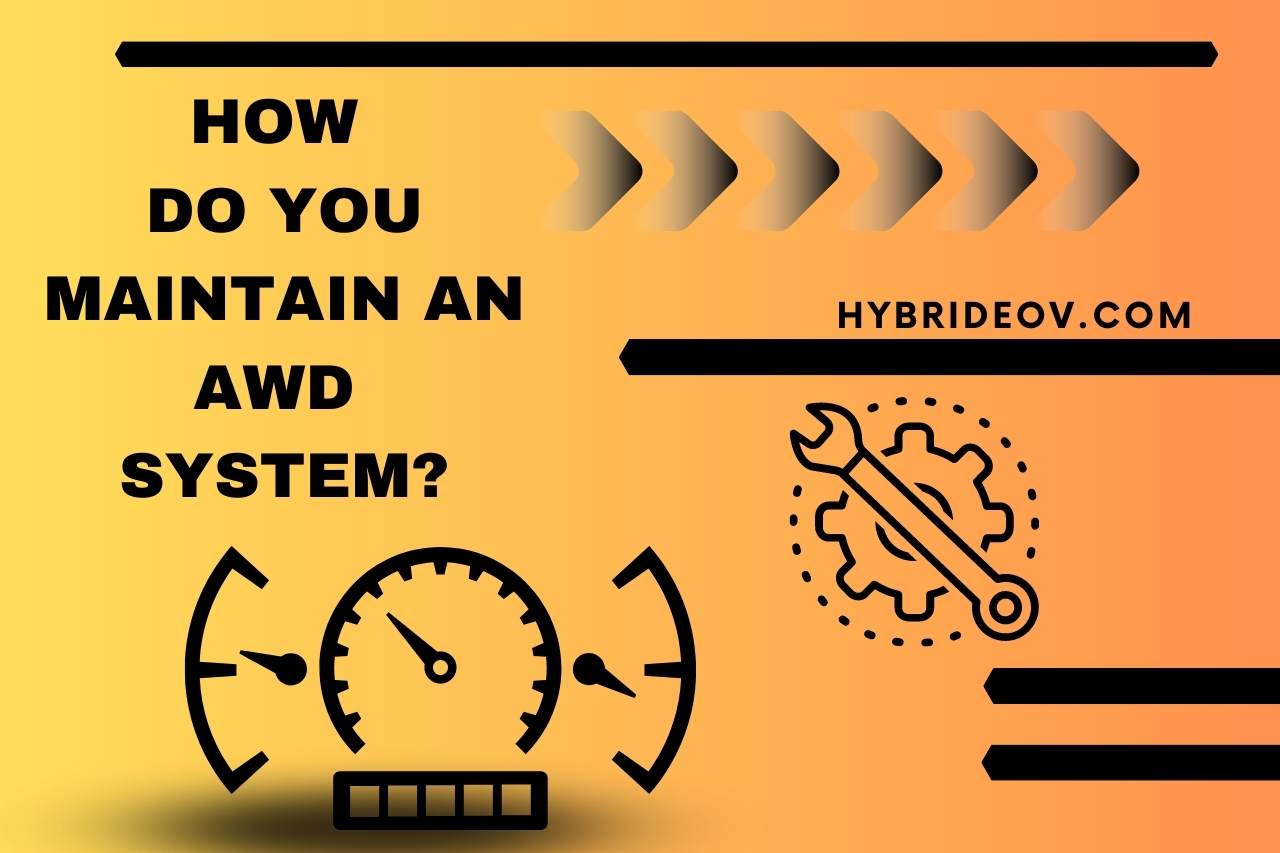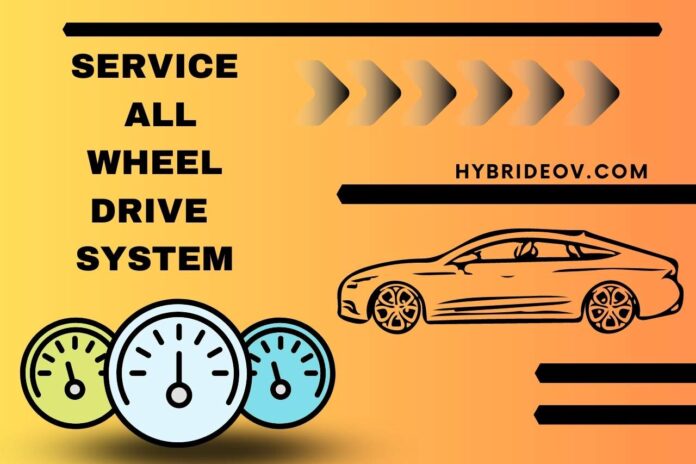Let us begin a detailed investigation of the crucial part of all-wheel drive (AWD) systems maintaining the best possible traction and stability for vehicles. AWD systems have emerged as an essential part of contemporary vehicles. Like all other parts, these systems need routine maintenance to operate at their best. In this article, we will explore about service all-wheel drive system.
What does It Mean to Service the All-wheel Drive System in a Vehicle?
The parts that distribute power to all four wheels must be maintained and inspected as part of an all-wheel drive (AWD) system service.
The AWD system uses a driveshaft to distribute engine power between the front and back wheels to ensure the best traction and stability.
When the AWD system is disabled and the message ‘service all-wheel drive system’ shows, the car is only propelled by its front wheels. It may significantly impact performance, especially in difficult terrain or bad weather.
The beeping warning may be continuous or flash from time to time. It can occur in other makes and models of vehicles as well. General Motors vehicles are the most frequently affected.
Timely servicing is necessary to maintain the performance of the AWD system and guarantee a safe and effective driving experience. It includes fluid inspections and component replacements.
What Causes the Service All-wheel Drive System Message to Appear?
There are several causes for the ‘service all-wheel drive system’ warning to appear.
First, a low battery charge has the potential to turn off AWD, resulting in a warning. The battery voltage is always above 9 volts for AWD to function correctly.
Second, the traction control system may need clarification if the wrong tire sizes are used or if all four tires are not completely replaced, which will cause the powertrain to wear down sooner and activate the alert.
Corroded connectors may also bring the alarm, particularly those in the rear differential harness or control module. This problem can be avoided by doing routine inspections and using dielectric grease.
Another possible offense is a defective control module frequently shorted by liquid exposure. Cleaning and safety precautions taken right away can be helpful. But if the module is damaged, replacement is required.
Overheating of the rear differential clutch assembly triggers the warning. Requiring a cool-down period for reactivation.
Lastly, a failing seal or tainted rear differential fluid might impair the system’s performance, prompting prompt replacements to prevent costly component damage.
Regular servicing is essential to preserve the AWD system’s effectiveness and ward off potential problems.
How to Fix the Service All-wheel Drive System?
The first thing to do when receiving a ‘service all-wheel drive system’ alert is to use a specialist scanner capable of communicating with the AWD system.
Standard OBD scanners won’t retrieve relevant trouble codes for this warning. Scan the car to identify the underlying problem using the appropriate scanner.
While locating the issue is crucial, even for seasoned DIYers, correcting AWD system issues can be challenging. Best get the advice of a trained mechanic to prevent worsening the problem.
Take the following actions as a final checklist –
- Check the Central Control Module (CCM) to see if DTC C0550 is shown as a current or past diagnostic issue code.
- Ensure the battery voltage stays above 9 volts to keep the AWD system operating.
- The ignition should be off for at least two minutes before clearing diagnostic issue codes.
- Start the engine. Then wait for the system to initialize for 40 seconds.
- Essential to respond to the ‘service all-wheel drive system’ alert immediately to guarantee the vehicle runs effectively and securely under all circumstances.
Is It Safe to Drive with the AWD Light On?
The answer is yes. It is safe to drive with the vehicle’s AWD light on. Driving on difficult or uneven terrain is not suggested due to the potential for traction loss.
It is advised to stop and turn off the engine if the AWD light is blinking continually. Wait three to five minutes before restarting the engine.
It is best to address and fix the check engine light before continuing to drive since it implies a more serious problem than just the AWD system.

How Do you Maintain an AWD System?
Proper maintenance is essential for an AWD system to work at its best and last as long as possible. An AWD vehicle requires the following maintenance procedures-
- Use the Proper Tires – Choose tires suitable for all weather conditions to improve grip, handling, and the capabilities of the AWD system. It’s essential to keep the tires in good shape and correctly filled.
- Maintain Fluid Levels – Regularly check and re-fill the transmission, transfer case, and differential fluids. These fluids lubricate the different parts, ensuring a smooth operation and reducing wear.
- Avoid Handbrake Turns – Avoid aggressive maneuvers like handbrake turns, which could harm the AWD system and put stress on it.
Use a flatbed to prevent damage to the drivetrain when towing an AWD vehicle. The mechanism could be harmed by dragging two wheels on the ground.
- Avoid Hard Launches – Steer clear of abrupt acceleration from a stop, especially in AWD vehicles with a manual transmission, to lessen stress on the drivetrain.
- Consider Several Tire Types – The effectiveness of the AWD system is primarily influenced by tire type. All-wheel drive vehicles rely on the proper lubrication provided by the transmission, transfer case, and differential fluids to function correctly and guarantee the system’s dependability.
- Making the Most of Their All – weather capabilities and improved driving experiences, owners of AWD systems may benefit from superior performance, increased safety, and extended vehicle longevity by following specific maintenance procedures.
How Do I Know If My AWD is Working?
You may perform a few tests to see if your AWD system is operating correctly. Start the engine, remove the parking brake, and shift into first gear first.
If the AWD system is functioning, gently add power, and the car should try to go ahead while being propelled by the back wheels.
Next, accelerate after stopping on ice or snowy terrain. A working AWD system may briefly spin all four wheels without activating traction control, whereas a malfunctioning system may engage traction control and pull to one side.
Pay attention to the EVIC (Electronic Vehicle Information Center) lights when driving. All four wheels should be illuminated.
Once stopped, put the vehicle into neutral and apply the brakes. AWD systems that are in good operational order should convert to RWD quickly.
Finally, use a scan tool to look for any trouble codes. Check the AWD system’s fuse, relay, power, and ground connections if any codes are absent.
Watch this one,
Video Credits – Car-Addiction
You May Also Like
- Does Ford Escape Have 4 Wheel Drive? Unlocking the Capabilities
- Is Honda Pilot 4 Wheel Drive? Different Honda Pilot Generations




